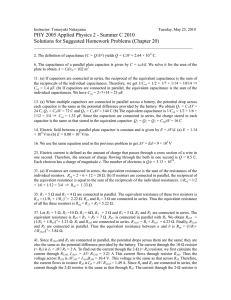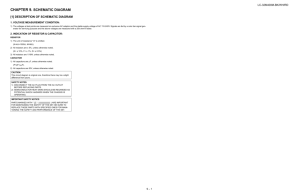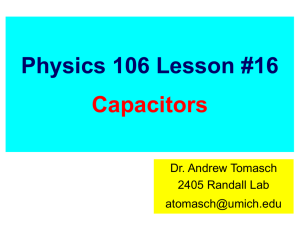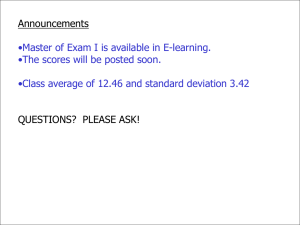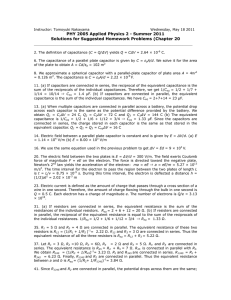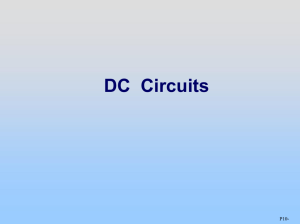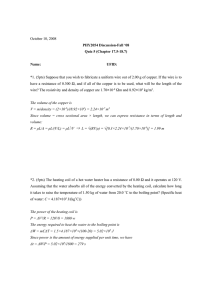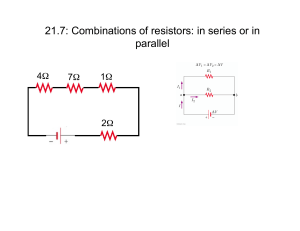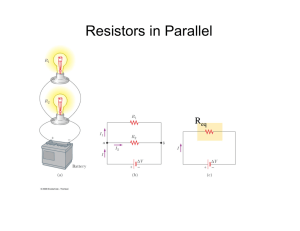February 17, 2009 PHY2054 Discussion-Spring ‘09 Quiz 4 (Chapter 18.1-18.7)
advertisement
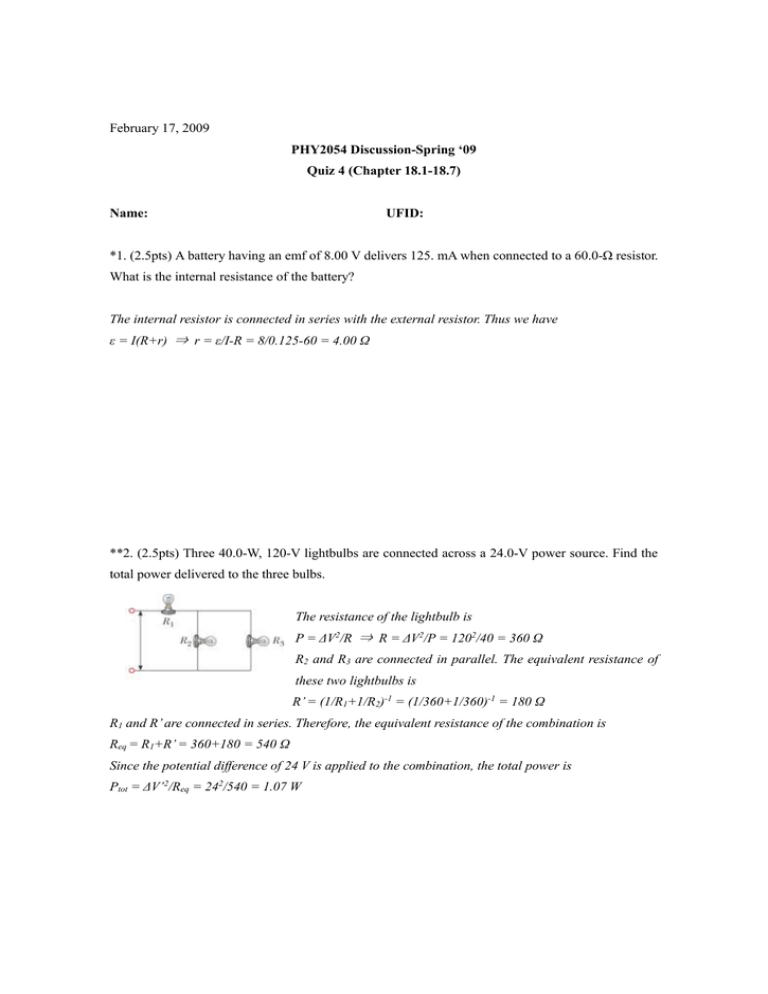
February 17, 2009 PHY2054 Discussion-Spring ‘09 Quiz 4 (Chapter 18.1-18.7) Name: UFID: *1. (2.5pts) A battery having an emf of 8.00 V delivers 125. mA when connected to a 60.0-Ω resistor. What is the internal resistance of the battery? The internal resistor is connected in series with the external resistor. Thus we have ε = I(R+r) ⇒ r = ε/I-R = 8/0.125-60 = 4.00 Ω **2. (2.5pts) Three 40.0-W, 120-V lightbulbs are connected across a 24.0-V power source. Find the total power delivered to the three bulbs. The resistance of the lightbulb is P = ΔV2/R ⇒ R = ΔV2/P = 1202/40 = 360 Ω R2 and R3 are connected in parallel. The equivalent resistance of these two lightbulbs is R’ = (1/R1+1/R2)-1 = (1/360+1/360)-1 = 180 Ω R1 and R’ are connected in series. Therefore, the equivalent resistance of the combination is Req = R1+R’ = 360+180 = 540 Ω Since the potential difference of 24 V is applied to the combination, the total power is Ptot = ΔV’2/Req = 242/540 = 1.07 W Constants & Formulas Ohm’s law: ΔV = IR Power: P = IΔV = I2R = ΔV2/R Equivalent Resistance Equivalent Capacitance Parallel: 1/Req = 1/R1+1/R2 Series: Req = R1+R2 Parallel: Ceq = C1+C2 Series: 1/Ceq = 1/C1+1/C2 Kirchhoff’s Rules RC circuit Junction Rule: ΣIin = ΣIout Charging: q = Q(1-e-t/τ), τ = RC Loop Rule: ΣΔV = 0 Discharging: q = Qe-t/τ, τ = RC ***3. (2.5pts) Five resistors are connected as shown below. When a potential difference of 20.0 V is applied between point a and b, the total power consumed by the combination is 60.0 W. Find the unknown resistance R. By symmetry equal currents flow in two resistors with the same resistance. The total current in the circuit is I1+I2 = P/ΔV = 3 A Applying Kirchhoff’s rules, we calculate the currents in 2-Ω resistor, 8-Ω resistor and the unknown resistor R. 2I1+8I2 = 20 ⇒ I1 = 0.667 A, I2 = 2.333 A I1 = I2+I3 ⇒ I3 = I2-I1 = 2.333-0.667 = 1.666 A The potential across the resistor R is ΔV = 8I2-2I1 = 8×2.333-2×0.667 = 17.33 V Thus the resistance is R = ΔV/I = 17.33/1.666 = 10.4 Ω **4. (2.5pts) The circuit below contains two resistors, R1 = 2.0 MΩ and R2 = 3.0 MΩ, and two capacitors, C1 = 2.0 μF and C2 = 8.0 μF, connected to a battery with an emf of 120 V. Assuming there are no charges on the capacitors before the switch is closed, find the charge on the 2-μF capacitor 30.0 s after the switch is closed. Two resistors are connected in series and two capacitors are connected in parallel. The time constant of the circuit is calculated as Req = R1+R2 = 2+3 = 5 MΩ, Ceq = C1+C2 = 2+8 = 10 μF ⇒ τ = ReqCeq = 5×106×10×10-6 = 50 s The potential across capacitor 1 is the same as that across the equivalent capacitor, thus we have q(t) = εCeq(1-e-t/τ) ⇒ ΔV = q(t)/Ceq = ε(1-e-t/τ) = ΔV1 q1(t) = C1ΔV1 = C1ε(1-e-t/τ) = 2×10-6×120(1-e-30/50) = 108×10-6 C = 108 μC


